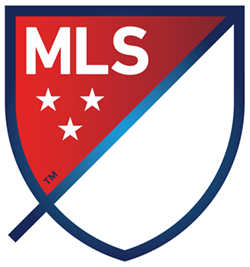 While the focus on stadium talk in San Diego has been dominated by the Chargers’ proposal for a downtown NFL stadium, they are not the only stadium game in town.
While the focus on stadium talk in San Diego has been dominated by the Chargers’ proposal for a downtown NFL stadium, they are not the only stadium game in town.
Seeking its own major upgrade, San Diego State University (SDSU) unveiled its plan on Tuesday for the construction of a “West Campus” on the current site for Chargers games: antiquated Qualcomm Stadium near the main SDSU campus in Mission Valley.
A week after the Chargers formally announced their financing plan for a 65,000-seat stadium and convention center in the East Village area of San Diego near Petco Park, SDSU rolled out drawings and financial figures for its campus expansion, which includes plans for a 40,000-seat stadium for the Aztecs football team and possibly an MLS expansion franchise.
“We will, most assuredly, need more space for the long-term advancement of our university’s programs over the next 50 years,” SDSU president Elliot Hirshman said in a blog post on the University’s website. “Let’s dream as a community, knowing that the opportunity to advance the future of our university is before us.”
San Diego Union-Tribune columnist Kevin Acee wrote Wednesday that Hirshman has met with potential MLS investors and that the league, which is seeking to add four expansion franchises, has expressed an interest in San Diego.
They key would be the stadium on the newly-configured Qualcomm site. Capped at 40,000 seats, the stadium would offer both the MLS and the Aztecs that kind of intimacy that would make it attractive to the league and to potential football recruits, as the Aztecs look to improve their position in the hyper-competitive world of big-time NCAA football.
The Aztecs have long played at Qualcomm, but the large, outdated stadium does not provide a proper atmosphere for the college program, which often finds itself playing in a half-empty stadium. And with its main campus overlooking the Mission Valley site, the school would probably be reluctant to follow the Chargers to a downtown stadium – provided the Chargers get the necessary public backing for its financing plan of raising hotel taxes to 16.5 percent. Should the ballot initiative fail in November, the Chargers would remain free to leave San Diego and join the Rams in Los Angeles, which would serve to fast-track the SDSU plan, with Qualcomm Stadium abandoned.
The new Aztec stadium would occupy 25.2 acres at the northeast corner of the campus site and contain 35,000 seats. Garage and on-site parking would offer 14,760 spaces. The stadium would also to continue to be served by local trolley service.
In an interview with the U-T on Tuesday, Hirshman cited Temple University’s current plans for a $126 million, 30,000-seat stadium in Philadelphia as a template for SDSU. Students voted for a $90 fee increase in 1988 to pay for Viejas Arena for basketball. A similar scenario could help pay for the new football stadium, which is estimated to cost roughly $250 million.
The campus and stadium plan was presented Tuesday at a briefing sponsored by SDSU’s real estate center and featuring representatives from JMI Realty, Cruzan development, Cisterra Development and Carrier Johnson + Culture architects.
Former Padres owner John Moores, who currently owns JMI Reality, has reportedly expressed interest in bringing the MLS to San Diego, although Moores’ representatives denied such reports on Tuesday.
Photo of 2013 MLS All-Star Game by Brett Flanders via flickr.com.
